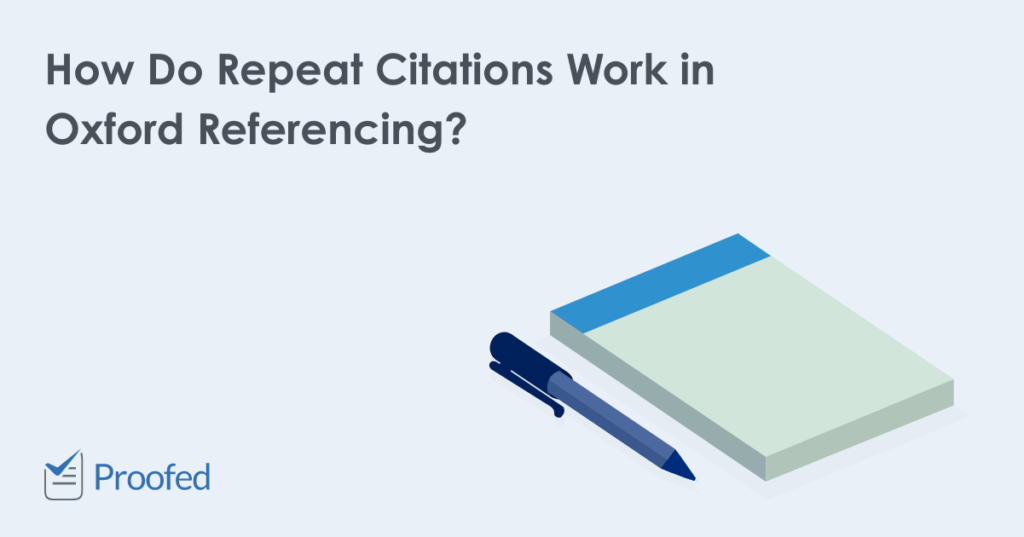All versions of Oxford referencing use a shortened footnote format for repeat citations. The good news is that this will save you repeating source information in an essay. There are two common approaches to formatting repeat citations in this system, too, namely:
- Using the author’s surname plus a page number.
- Using the Latin terms “ibid.,” “op. cit.,” and “loc. cit.”
Check out our guide below to find out how both citation styles work. And make sure to check which version your university prefers!
Author’s Name + Page Number
The first time you cite a source in Oxford referencing, you will give full publication information. But after that, to prevent repetition, you can use a shortened footnote format. One approach to doing this is to give just the author’s surname and a page number:
1 C. Alexander, Mrs Chippy’s Last Expedition: The Remarkable Journey of Shackleton’s Polar-Bound Cat, London, Bloomsbury, p. 24.
2 T. Cox, The Good the Bad and the Furry: Life with the World’s Most Melancholy Cat, London, Sphere, p. 112.
3 Alexander, p. 30.
Here, for example, the repeat citation of Mrs Chippy’s Last Expedition only includes the author’s surname and a pinpoint citation (i.e., the number of the page cited). But since this is the only “Alexander” source in the essay, the reader will know which source you are citing.
If you cite more than one source by the same author in a document, though, you should also include a shortened version of the title in repeat citations:
1 T. Cox, The Good the Bad and the Furry: Life with the World’s Most Melancholy Cat, London, Sphere, p. 112.
2 T. Cox, Close Encounters of the Furred Kind, London, Sphere, p. 6.
3 Cox, The Good the Bad and the Furry, p. 110.
Here, for instance, we’ve cited two sources by the same author. Thus, we’ve included a shortened version of the source title for the repeat citation in footnote three so the reader can tell which source we’re citing.
Latin Terms (Ibid., Op. Cit., and Loc. Cit.)
An older – but still very common – approach to formatting repeat citations uses the Latin terms “ibid.,” “op. cit.,” and “loc. cit.” These abbreviations are widely used in Oxford referencing, with each term having its own purpose.
Find this useful?
Subscribe to our newsletter and get writing tips from our editors straight to your inbox.
You can use “ibid.” for consecutive citations of a source. This means citing the same source twice or more in succession. “Ibid.” is fine by itself for citing the same page twice in a row, but you should provide a page number if you’re citing a different part of the text. For example:
1 C. Alexander, Mrs Chippy’s Last Expedition: The Remarkable Journey of Shackleton’s Polar-Bound Cat, London, Bloomsbury, p. 24.
2 Ibid., p. 110.
3 Ibid.
Here, the second footnote refers to a different part of the book, while the third footnote refers to the same page as the second one.
You can use “op. cit.” and “loc. cit.,” meanwhile, for non-consecutive citations of a source. This means returning to a previously cited source after you’ve cited a different source. This means returning to a previously cited source after you’ve cited a different source. In particular, you should:
- Use “op. cit.” when citing a different page of a source.
- Use “loc. cit.” when citing the same page as in the previous citation.
So, for example, we could use “op. cit.” and “loc. cit.” like this:
1 T. Cox, The Good the Bad and the Furry: Life with the World’s Most Melancholy Cat, London, Sphere, p. 112.
2 C. Alexander, Mrs Chippy’s Last Expedition: The Remarkable Journey of Shackleton’s Polar-Bound Cat, London, Bloomsbury, p. 24.
3 Cox, op. cit., p. 44.
4 Alexander, loc. cit.
In the footnotes above, we use “op cit.” to cite a different part of the T. Cox book, while we use “loc. cit.” to repeat the Alexander citation.
Not every version of Oxford referencing uses these terms, though, so always check your style guide for advice and make sure to apply citations consistently. And if you need any more help ensuring your referencing is error free, don’t forget to have your work proofread by the experts.
